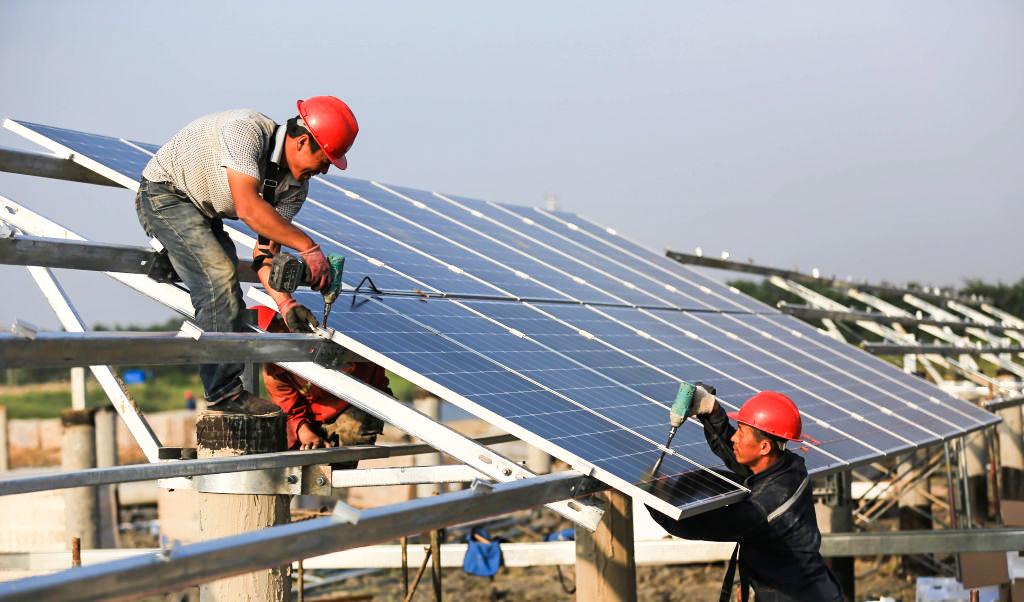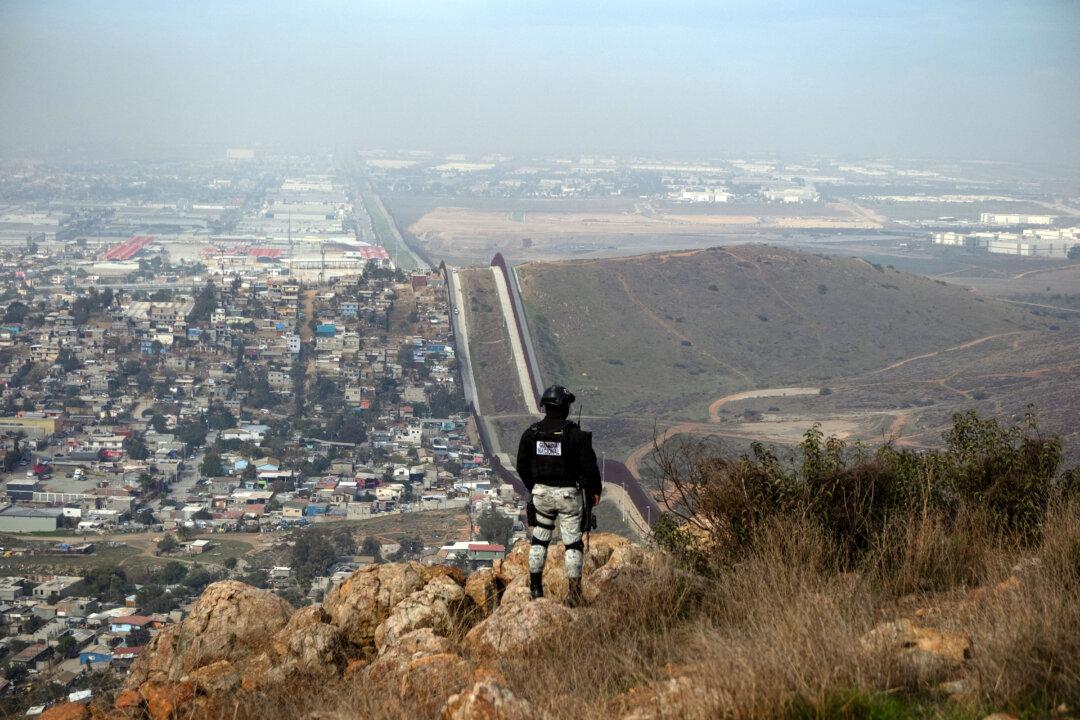American Founding Father Benjamin Franklin once said that “experience is an expensive school but fools will learn in no other.” Germany’s green energy policy, launched in the year 2000, could have been a cheap lesson for the United States today.
Twenty-two years ago, Germany stepped into the forefront of the green energy movement, implementing its “Energiewende,” an ambitious program of subsidies for solar panels and wind turbines, coupled with a reduction in coal, oil, and natural gas. After the 2011 nuclear disaster in Fukushima, Japan, Germany decided to also close its nuclear plants.
The capacity factor for solar energy was just 10 percent because much of the country is often overcast. Wind energy was also producing well below capacity because wind turbines produced no energy on calm days and had to shut down on particularly gusty days to prevent turbine blades from being damaged. Even within those limits, the amount of energy produced by wind turbines was hugely variable depending on how hard the wind was blowing.
“It costs Germany a great deal to maintain such an excess of installed power,” the IEEE report stated. “The average cost of electricity for German households has doubled since 2000.”
An electricity grid must manage huge variability in demand. It must have enough capacity to cover peak demand, for example during the hottest hours of summer, but also have the flexibility to reduce power during early morning hours or springtime days when demand falls considerably. Because renewables are unpredictable in terms of how much energy they will produce, and when, they add substantial variability to the supply side of the equation as well.

“The whole idea that you would take something as complicated as an electric system, one of the most complicated things people have invented to date, and choose what to put on that system and how to run it by a popularity contest, to me that’s nuts and it’s going to end in tears,” Peter Hartley, professor of energy economics at Rice University, told The Epoch Times. “Trying to run that system with politics is not a very smart thing to do.”
After a sharp drop in 2020 due to the COVID-19 pandemic, Germany’s CO2 emissions increased by 31 million tons in 2021. A significant portion of this increase was due to the failure of renewables to produce, which forced Germany to lean more heavily on fossil fuels, including coal, to keep its electric grid going. And while shutting down its own nuclear plants, Germany also bought nuclear-generated electricity from France.
The surplus periods for wind and solar brought problems as well. When the weather cooperates and wind and solar produce at peak capacity, they often generate more power than consumers want. This leaves power companies with the choice of either trying to store excess energy, which is technologically problematic, or trying to offload it at deep discounts. This left Germany in a position of importing energy when prices were high and attempting to dump excess energy on a saturated market when prices were low.
This market distortion from government intervention comes at a price, however. In America, traditional energy producers that don’t get subsidies, such as natural gas, struggle to make a profit when prices are artificially depressed, and this means that more reliable energy producers are crowded out of the market and, in many cases, are shut down. Nuclear energy, a reliable, relatively inexpensive, carbon-free producer, suffers the most because of how costly it is to cycle nuclear plants up and down.
“By having governments force intermittent renewables into the system through industrial policy,” Hartley said, “You’re actually penalizing nuclear, which might be the best long-run solution.”
There is an ongoing debate about how much and how fast CO2 emissions are changing the earth’s climate. However, if reducing carbon emissions is the ultimate goal, nuclear is probably the best means of achieving it. It emits far less CO2 than renewable energies, when mining and construction are taken into account; it is scalable; it is steady, reliable, and not subject to wild variations due to the weather; and it builds energy independence.
“Two of the most successful mass displacement of fossil fuels in the world are the nuclear programs in France and Sweden,” Hartley said. Nuclear is by far the most energy-dense technology, producing 10,000 times the amount of energy per kilogram that diesel fuel produces. It also takes up less space than solar panels and requires far less mining, with all the collateral damage that comes with that.
According to Jessica Johnson, communications director for Nucleareurope, “We’re starting to see member states recognize that in order to have a stable supply of low carbon electricity, nuclear needs to be part of the mix.”
Europe has set ambitious targets to “decarbonize our economy completely by 2050,” Johnson said. If nuclear energy is excluded, “we can forget those targets.”
‘Carbon Debt’
Germany’s Energiewende has succeeded in reducing its national carbon footprint substantially, but it only measures emissions within its own borders. Had it measured its actual global footprint, it would have discovered that the batteries, solar panels, and EVs that it was importing were increasing CO2 emissions substantially.Rare earth minerals essential to the production of solar panels, wind turbines, and EV batteries include lithium, nickel, cobalt, manganese, and graphite, among others. Copper is also essential for building extended power lines to connect grids to distant renewable sources, such as offshore wind farms and remote solar fields.
The dominant players in this market are the Democratic Republic of the Congo (DRC) and China, which together control a majority of the production of many essential renewable-energy minerals. “China’s share of refining is around 35% for nickel, 50-70% for lithium and cobalt, and nearly 90% for rare earth elements,” the report states.
The mining of these materials is energy-intensive and can be devastating to local environments. Lithium, for example, comprises only about one percent of the rock from which it is mined, causing the destruction of large swathes of land in the mining process in order to extract it. Lithium and copper mining also require huge amounts of water, straining natural resources. Cobalt is often mined by child slave labor in Africa. And the refining process releases toxic heavy metals and other pollutants into the soil and water.
‘Conditions of Genocide’
Germany struggled with the moral consequences of its Energiewende. The German parliament determined that the solar panels it was buying from China were being manufactured under “conditions of genocide” and slave labor.“People think they’re very virtuous with these wind, solar, electric vehicles and so forth,” Hartley said. “But when you look into the background of these things, it’s pretty dicey stuff from a human rights point of view, let alone the strategic issues.”

In February, these strategic issues came to the fore when Russia invaded Ukraine, and Germany discovered how dependent it had become on unfriendly foreign suppliers. Wind and solar, upon which it had bet so heavily, proved incapable of filling the gaps its energy policies had created, and the embargo of Russian exports, together with counter-threats from Russia to cut off vital energy supplies to the West, hit Germany hard.
The German government could soon be in a position of choosing which companies are more essential than others when allocating scarce energy supplies. As is often the case with government industrial policies, the Energiewende could end up harming the industry to such an extent that the only solution would be more government intervention to save it.
Throughout Europe, some companies began shutting down in June, unable to compete with foreign firms whose energy costs were much lower. One country that is not transitioning to renewables is China.
The strategic risks of Biden’s green gamble go beyond consumers and industry to include our military. Access to energy often proves to be decisive in military conflicts. One of the reasons that Germany and Japan were defeated in the Second World War was their inability to acquire fuel for their ships, planes, and tanks. Today, while America’s submarines and aircraft carriers are nuclear powered, most of our military still runs on oil derivatives; diesel for tanks and ships and jet fuel for aircraft.
China is not a significant producer of oil, which has been its strategic Achilles heel. Transitioning from fossil fuels to wind and solar, however, reverses this equation, making American industry dependent on China for the raw materials of renewable energy, when we have fossil fuels in abundance.
The lesson that the Biden administration could have learned from Germany is that wind and solar are inferior technologies that are inefficient, unreliable, polluting, and create a dangerous dependence on foreign countries that are not always your friends. Apparently, they weren’t paying attention.





